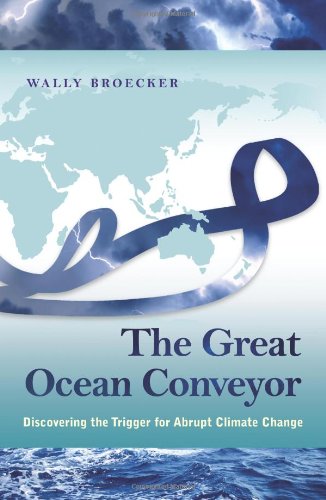The Aurora Programme saga. Part 1
the saga begins
This article is the first in a 4-part series about the Aurora Programme, a privately-funded expedition to Antarctic which took place in the 1991-1992 austral summer/autumn. I’ve tried to be fair and accurate in the telling, but it took place a long time ago, and was shrouded in controversy. As far as I can tell, the full story of the Aurora Programme has never really been told. Certainly there is very little you’ll find about it on Google, and what little you will find is not happy. But while there were plenty of negatives for the critics to get their teeth into, they were by no means the full story. So here is one side - and I emphasise, my side - of a very multi-faceted story indeed. I’d like to thank Dr Jeff Ridley for helping to jog my memory, and providing valuable feedback. I have included a few passages which originated from Jeff, but the responsibility remains fully my own.
A note on the photography: all the photos in these articles have required quite a deal of attention to get them even presentable. They’re strictly documentary!

So, why, now, in January 2014, did I decide to write about a long forgotten expedition which took place over 20 years ago ? The trigger was the hubbub around the temporary stranding of the Russian ship Akademik Shokalskiy, along with its private expeditionary team of scientists and tourists. Our ship also got stuck in the ice, although with little fanfare. The principal actor of the Akademik Shokalskiy expedition, Professor Peter Turnley, is weirdly reminiscent of the leader and driving force of the Aurora Programme, Dr Monica Kristensen. Both have an obsession with a heroic age explorer, in Turnley’s case Douglas Mawson, in Kristensen’s case, Roald Amundsen. Both - perhaps - used science as veil disguising their more personal agendas. Both are charismatic and driven. And both, regretfully, could be charged with over-estimating their abilities and neglecting basic risk management.
The roots of the Aurora Programme lie in Monica Kristensen’s desire to detect, recover and return to Norway the tent which Roald Amundsen had left at South Pole on 14 December 1911. Several years earlier, she had led a combined science/adventure expedition attempting to recreate Amundsen’s South Pole trek together with British glaciologist, Neil McIntyre. Although not fully successful, this expedition was widely applauded, and set the stage for the following, far more ambitious steps. Kristensen’s objective was to present Amundsen’s tent as the centrepiece of the 1994 Winter Olympics in Lillehammer, Norway. From the start she wanted this to be within the framework of a sophisticated, relevant science programme. Towards this, she managed to attract considerable logistic support and sponsorship from Statoil in Norway.

Monica Kristensen, Montevideo, November 1991
At that time, more so than now, non-scientific travel to Antarctica was frowned upon and impeded as much as possible by the signatory nations of the Antarctic Treaty (including Norway). So it was necessary to acquire at least a minimum level of approval, if not complete acceptance, from the Establishment. Although not affiliated with the Norwegian Polar Institute, Kristensen did manage to get scientific backing and involvement from the Norwegian Meteorological Institute (KNMI). And she also found some fellow travellers through Neil McIntyre, at University College London’s Mullard Space Science Laboratory (MSSL).
A team at MSSL, led by Dr Chris Rapley, and recently recast as the “Climate Physics Group”, had been involved in satellite remote sensing of polar regions for some time. I joined this group, from the British Antarctic Survey, in 1989. Coinciding with Kristensen’s plan for a 1991/2 expedition was the launch of the European Space Agency’s ERS-1 remote sensing satellite. MSSL provided much of the core science team working on data analysis algorithms for the satellite’s instruments, with special focus on land ice, and we were very interested in the opportunity of acquiring simultaneous ground validation data to verify our techniques. ESA were also keen to support this, and we received additional support from the British Antarctic Survey, who while not officially endorsing the expedition, agreed to nominate staff to sit on the steering committee.
It was also agreed to provide logistical support later in the season to a 4 person glaciology team from the University of Stockholm, led by Dr Per Holmlund.
A planning meeting was held at the Royal Geographical Society in London - a venue which itself lent still more respectability - and a three year plan was sketched out, geographically focussed on the Filchner Ice Shelf and bordering lands to the East and Southeast. And of course a land route lies along the ice shelf towards the South Pole, and Amundsen’s tent. The overall plan was baptised “The Aurora Programme”, after the expedition ship, the MV Aurora.
The next step was to hold a 3 day science planning workshop in Oslo. The science scope encompassed physics, glaciology, oceanography, geology and meteorology. As well as from people included in the field party, scientists from several supporting institutes took part. All in all, a good confidence-building activity.

MV Aurora, at the dock in Montevideo
The Aurora was due to depart from Norway in October 1991 to sail to Montevideo, where we would catch up with her in late November. In the meantime we had to prepare and ship our equipment. The MSSL field team was led by Dr Jeff Ridley, a talented physicist, with me making up the numbers. Together we wanted to provide ground data to calibrate the range and the reflectivity power measurements of the ERS-1 radar altimeter. Over the floating ice shelf, the radar altimeter could give unprecedented coverage of the surface elevation (after correction for the geoid) and therefore the ice thickness, given a few well accepted assumptions. We wanted to test some of these assumptions, in particular how far the radar signal penetrated into the lower density top layer of the ice before being reflected. We had a model for this, but to verify it we needed in-situ temperature profiles, density and independently measured elevation and reflectivity. For the elevation measurement, the UK Natural Environment Research Council (NERC) had kindly lent us 2 new-fangled Ashtech GPS receivers, the size of microwave ovens, and worth something like £30,000. They also sponsored a training course for me to learn the rudiments of differential GPS surveying. The KNMI provided several encapsulated ARGUS automatic weather stations. But the piece-de-resistance was the MSSL custom-built scatterometer, which measures surface reflectivity at radar frequencies. An arcane construction made from building site scaffolding and mounted on two skis allowed the scatterometer to be suspended several meters above the snow, and pushed along by Jeff in true Scott Of The Antarctic style. It was quite a sight (not content it with freezing it to death, the following year Jeff dragged the poor thing all over the Simpson Desert in Australia).

Heinrich & Jeff practise building the scatterometer frame in Montevideo

Nils tests the ground-penetrating radar due to be taken to the South Pole
The first glitches hit us in Montevideo. First of all, our air cargo had not turned up. It was still stuck in Madrid for whatever reason. The local handling agent moved Heaven & Earth to get over the serial “mañanas” and eventually it turned up. At the same time, a strike by dock workers prevented us refuelling and loading provisions. We ended up leaving Uruguay some 3 weeks late, which was not terribly good news as apart from the $8000 daily cost of keeping the Aurora in port, our plan was to base our field work near to 80 degrees South, which meant that by the end of January we had to be wrapping up. It gets dark and cold out there after that.

Loading the supplies
The Aurora was not a large ship. It started out life as a seal hunter. As seal hunters go, I think it was pretty large, but as Antarctic expedition ships go, it was, shall we say, snug. It had one accommodation deck with the galley, mess / day room, and crew quarters; an extension at the rear for expedition member bunk rooms, affectionately known, and with good reason, as The Propellor Suite; a converted hold towards the bow which acted as the science / logistics room, and the bridge deck with the bridge, radio room, captain’s quarters and expedition leader’s quarters. Oh, and a small but perfectly functional helicopter deck, complete with GLACE (Greenland Air Charter) Bell Jetranger helicopter.
To make up lost time, the Aurora pointed due South and went absolutely flat out (all of 10 knots), putting a severe strain on the engines and fuel reserves. On a number of occasions small fires broke out in the engine room, requiring us to follow the evacuation drill and assemble on deck in survival suits. Crossing the Furious Fifties in such a small ship was seriously entertaining, with roll angles up to a nauseating 45 degrees. Many lunches were lost.

The first iceberg
At this point I should say that apart from our field party itself, generally I will avoid using names, mainly because I can’t remember everybody’s surname. But generally we were split into three groups: the ship’s crew, the science / expedition team, an experienced Danish-Norwegian polar logistics group, as well as a Swedish helicopter pilot and a Norwegian Radio-TV journalist making a documentary about the trip. In total the complement was about 20 people. The “ERS-1 Validation Team” was composed of myself and Jeff Ridley, with support from Peter Webb, a young Cambridge-educated, fiddle-playing outdoors fanatic with some experience of Svalbard but otherwise new at this stuff. We weren’t likely to get into too much trouble on the ice shelf, and since I already had some experience of the Antarctic and the neighbouring Ronne Ice Shelf, this was considered adequate. Later in the season we were also to be joined by University of Stockholm glaciologist Elisabeth Isaksson and field assistant Axel Bodin.
To be continued…

